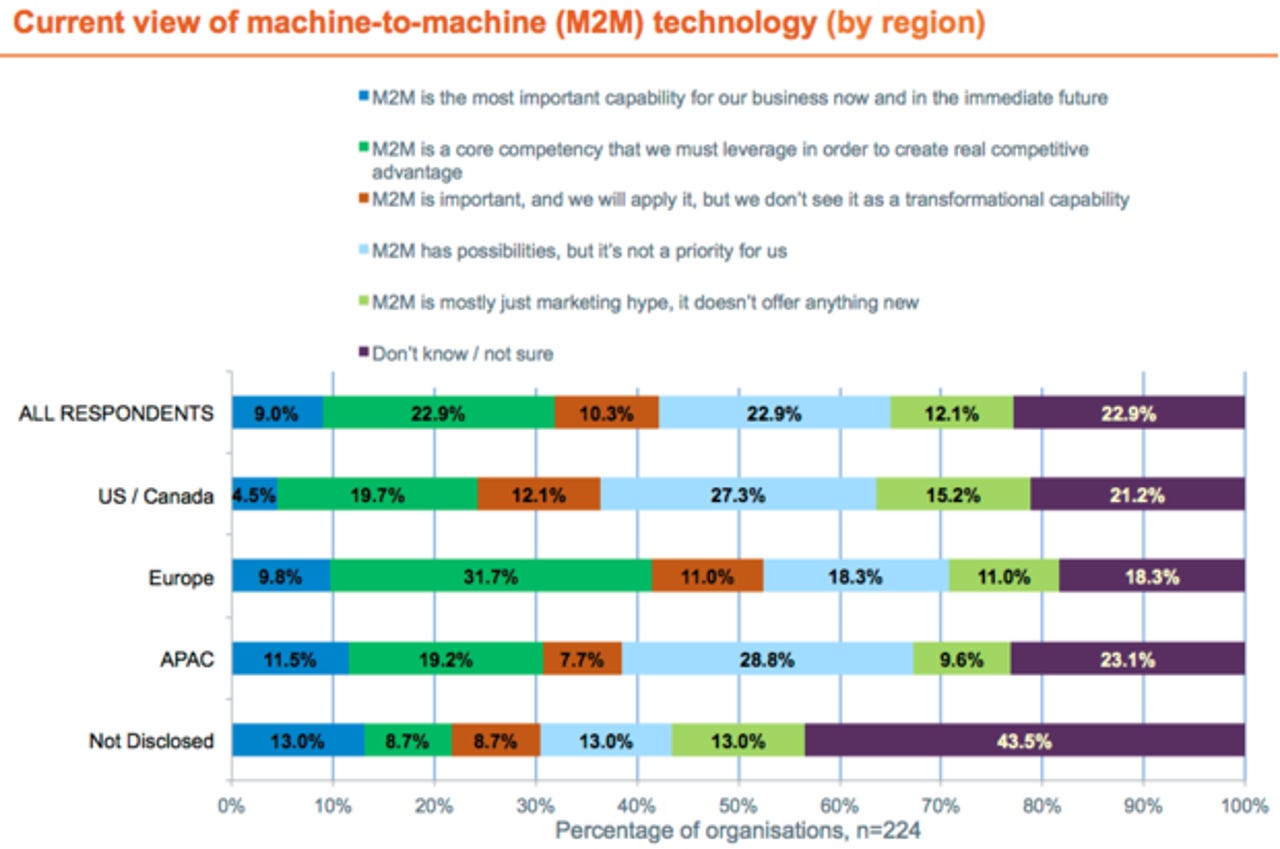M2M, Internet of Things: 10 key points

Machine to machine connections, also known as the Internet of Things, sit in the intersection of cloud computing, big data and mobility and could be a game changer for many industries. However, the M2M ecosystem is young and a lot of data management needs to happen before the technology delivers real returns.
Those were some of the key takeaways from a panel of executives gathered by ZDNet, TechRepublic and CBS Interactive B2B's custom content group in New York on Monday. The panel, sponsored by Verizon, highlighted how M2M has vast potential for industries such as healthcare, utilities, manufacturing and transportation to name a few, but is still nascent in many ways.

More on M2M
Note: Our next CIO roundtable, "Dynamic Cloud and Intelligent Networking," will be held in Chicago Aug. 1. If you're a CXO in the area email Carol Krol at carol.krol@cbsi
- How far along is M2M? IDC analyst Carrie MacGillivray said that projections of 50 billion connected devices by 2020 may be a bit "aspirational." If you carve out censors the total is more like 100 million. "M2M is just at the starting gate," she said. There will be a lot of growth over the next decade, but an ecosystems of vendors, partners and standards need to be built.
- Compliance, regulation and standards matter. Sanjay Ramaswamy, vice president of planning and business systems at Johnson & Johnson, said M2M has a lot of potential for healthcare, medical devices and pharmaceuticals. The catch? "We need to see how the ecosystem shakes out," he said. Specifically, security standards will matter for regulated industries that face numerous compliance rules. Sensors will also need to be standardized so they can talk to each other and share data. Ursuline Foley, CIO at insurance firm XL Capital, said that privacy laws will also be important around the world. Anthony DiPrizio, CTO of Coldwell Banker Sea Coast Advantage, said devices such as digital signage can aggregate data on sex, age and send you targeted incentives. Multiple devices will have the same capability, he noted.
- Consumerization and M2M. Gilad Lotan, chief scientist at Betaworks, an company incubator, said that the M2M movement could be driven by consumers. For instance, people are measuring health and statistics via devices such as Fit Bit and Nike's Fuel Band. These early adopters could in some way become de facto sensors and tie into health care outcomes.
- Hurdles in emerging markets. Unicef's Stefan Zutt, CIO, said that emerging markets often have technology ceilings that hamper the ability for sensors to interact. As a result, inventory and asset tracking has to be a bit more manual than hoped. He also wondered whether government or the private sector could truly drive an M2M strategy.
- Necessary precursors to M2M. XL's Foley said that there's a line to walk between getting a company's data house in order via standard definitions and pursuing M2M. Companies need to do the former in a way that doesn't put off M2M strategies too far in the future.
- Vertical best suited for M2M. Verizon's John Sullivan, director of M2M platform for the telco giant's enterprise unit, said transportation, healthcare and utilities are key areas for M2M demand. Transportation was also a front runner.
- Creativity and M2M. Peter Goldey, CIO and data scientist at OnboardInformatics, said the real hotbed for sensor data is likely to appear where we least expect it. The key for the industry is to create an ecosystem so developers can take advantage of interoperability to network and analyze various sensors and data points.
- Go to vendors. Ramaswamy said that M2M vendors are likely to be existing IT suppliers who have acquired smaller innovative companies. "Traditional vendors and consulting services understand the legacy stuff we have and can be realistic," he said. "We don't have to be on the bleeding edge." Smaller companies can be players too, but will have to prove they can integrate, know security and can provide analytics, noted Goldey.
- CXOs and M2M. The panel was unanimous that M2M and business processes will become one. As a result, business line leaders will be driving the M2M agenda with heavy involvement from IT. Everyone also agreed that people who can meld engineering, statistics and business understanding will be in demand from a career perspective.
- What's missing? Analytics tools that can enable the masses to make sense of M2M data was a missing ingredient, noted MacGillivray. Zutt also wanted more data and forecasting tools embedded in sensors. Business models for M2M were also tricky since traditional carrier billing approaches like monthly charges don't quite work for sensor information.